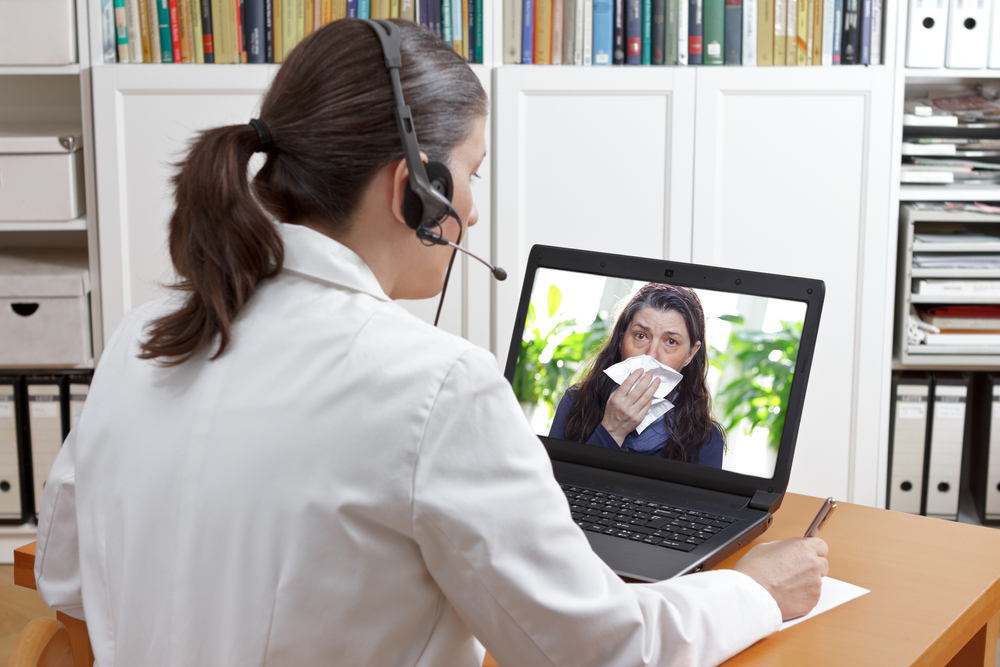Sensor Solutions Gather Data to Support Telehealth
AI-based remote monitoring helps providers manage care for COVID-19 patients
By Megan Headley
While there has been much discussion on the dramatic increase in telemedicine usage due to the COVID-19 pandemic—usage is up 22% even in U.S. states with the lowest telehealth adoption—video and phone calls are just one small piece of the telemedicine puzzle. The other, more critical piece is the monitoring equipment that arms physicians with the clinical data to determine if and when an intervention is necessary.

“With video calls alone, they would not have enough information to provide proper care to the patient,” points out Kuldeep Singh Rajput, CEO of Biofourmis, a provider of AI-powered digital therapeutics technology. “Hospital [systems] in the U.S. and internationally are now moving towards equipping patients with the right tools to [provide monitoring and management], have the data collected, and process that data using an analytics platform so that clinicians are not overburdened.”
Biofourmis’ Biovitals® Sentinel, powered by the FDA-cleared Biovitals AI platform, is one such solution being used to provide that insight. The platform provides continuous remote monitoring through a biosensor, worn on the patient’s upper arm, that collects data from more than 20 physiological signals. Combined with a patient-facing app that gathers additional information on symptoms and enables text and video visits, care providers can get a fairly complete picture of a patient’s health via a dashboard app on their smartphone.
Like many such remote monitoring platform providers, Biofourmis pivoted at the beginning of the year to customize the platform for COVID-19. The platform has been adapted both to track viral load (in order to predict, with approximately 93% accuracy, when a person should pursue a PCR swab test to confirm COVID-19) and to alert a provider of the need for interventions around 21 hours in advance of a critical complication due to COVID-19. Each of those applications was tested in a Hong Kong rollout earlier this year.
“In some of the rollouts that we have done in Australia, the U.K., and the United States, we also have monitored hospital staff, because the frontline workers are at a significant risk of getting COVID-19,” Rajput adds.
There’s a third instance where remote monitoring has helped healthcare systems better allocate resources. Using the continuous flow of patient data, providers can predict the length of stay for a patient and maintain a more accurate projection of bed availability.
While patient safety is driving the use of wearables, the efficient allocation of resources is partially why many health systems are turning to remote monitoring. “The entire idea of the platform and program was around how to improve nurse efficiency,” Rajput explains. “The challenge really was [the] shortage of nurses everywhere … one-at-a-time monitoring just isn’t a feasible option. So how do you leverage continuous monitoring to pick up complications so that clinicians and nurses can intervene earlier?”
In April, the Biofourmis platform was rolled out across Singapore’s state-run health system to support nurses dealing with a COVID-19 surge that has grown in recent months, largely impacting foreign workers. Singapore’s Ministry of Health set up community care facilities around the nation to care for COVID-19 patients who do not require acute care.
“Having this massive isolation facility with 15,000 beds and limited nurses, you need an ability to passively monitor these patients and be able to triage them so that we can improve safety of these patients,” Rajput explains. “So, all of these patients are monitored using the platform.”
If there’s a learning curve for the clinical care team adopting this solution, that curve can seem infinitely steeper for patients. It’s one reason Biofourmis set up a supporting 24/7 call center that answers patient questions about the platform.
In many ways, the use of wearable sensors to track COVID-19 upends many healthcare providers’ formulas for managing the surge. During the early days of the pandemic, health systems focused on containing COVID-19 patients, sending patients who did not have COVID-19 to alternate sites for care. With wearable sensors now able to monitor patients for potential complications due to coronavirus, those infected patients can be more safely quarantined remotely.
The Biofourmis solution is but one of the sensor-based solutions being considered. The Stanford Healthcare Innovation Lab is gathering data on the possible use of devices including FitBit® and Apple Watch® to pick up abnormal patterns that could predict possible infections. The goal is to build an algorithm that can apply this data to detect COVID-19 infection before symptom onset to improve rates of self-isolation. With more than 5,500 participants to date, the Stanford project has become one of the world’s largest studies on infectious disease using data from wearable health monitoring devices.
Of course, this tremendous amount of available data could also provide big-picture insight into how COVID-19 operates. “We are working with a couple of pharma companies that are leveraging some of the data we are collecting to learn more about the disease, and are also involved in a couple of clinical trials for COVID-19 drugs and vaccines,” Rajput says.
Rajput points out that existing EMR data already enables this type of analysis. The wearables simply deepen the understanding of the patterns in the data. “We have structured partnerships in such a way that we are computing continuous data from the patients, but we also have patient-reported data on top of that. We also have [a] clinical data layer, which includes comorbidities, medications patients are taking, and x-rays, as well as lab results, plus any swab tests that patients have taken. The data that we have collected is very comprehensive.”
Megan Headley is a freelance writer and owner of ClearStory Publications. She has covered healthcare safety and operations for numerous publications. Headley can be reached at megan@clearstorypublications.com.
